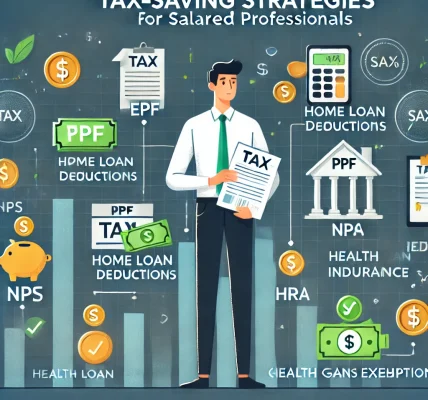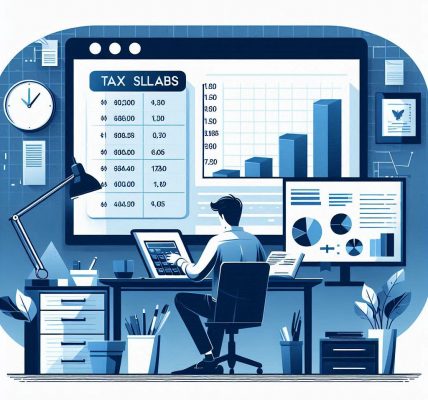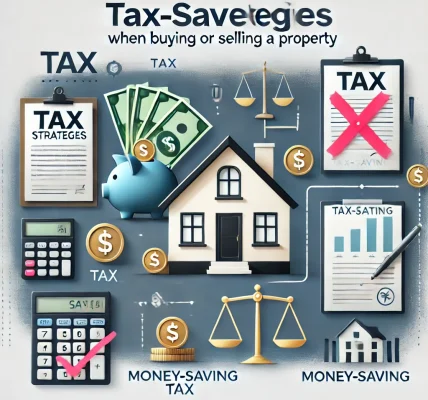Introduction
One of the smartest ways to maximize your take-home salary is by structuring it in a tax-efficient manner. Many salaried individuals unknowingly pay higher taxes due to poor salary structuring. By leveraging available exemptions, allowances, and deductions, you can legally reduce your taxable income and increase your savings.
This DIY guide will help you optimize your salary structure to save the maximum tax while ensuring compliance with income tax laws in India.
1. Understanding Salary Components
Your salary consists of various components, some of which are fully taxable, while others are partially or fully tax-exempt. Here’s a breakdown:
Fixed Components (Taxable)
- Basic Salary – Fully taxable, forms the base for other benefits.
- Dearness Allowance (DA) – Fully taxable, applicable mainly for government and PSU employees.
- Performance Bonus – Fully taxable, often paid annually or quarterly.
Variable Components (Tax-Exempt or Partially Taxable)
- House Rent Allowance (HRA) – Partially tax-exempt under Section 10(13A).
- Leave Travel Allowance (LTA) – Exempt under Section 10(5) if used for domestic travel.
- Food Coupons/Meal Allowance – Exempt up to ₹50 per meal.
- Mobile and Internet Reimbursement – Fully exempt if used for official purposes.
- Children’s Education Allowance – Exempt up to ₹100 per month per child (max 2 children).
- Car Lease/Transport Allowance – Exempt up to ₹1,600 per month (₹3,200 for disabled employees).
2. Optimizing Your Salary Structure for Maximum Tax Savings
1. House Rent Allowance (HRA) – Section 10(13A)
HRA is one of the best ways to save tax if you live in rented accommodation.
Exemption Calculation: The least of the following is exempt from tax:
- Actual HRA received.
- 50% of Basic Salary (40% in non-metro cities).
- Rent paid minus 10% of Basic Salary.
Pro Tip: If your salary includes HRA but you do not live in a rented house, you cannot claim this exemption.
2. Leave Travel Allowance (LTA) – Section 10(5)
- Exemption for travel expenses within India (not applicable for international trips).
- Covers travel by air, rail, or bus for self and family.
- Can be claimed twice in a block of four years.
Pro Tip: LTA does not cover accommodation, meals, or local transport expenses.
3. Food Coupons/Meal Allowance
Employers can provide food coupons (e.g., Sodexo, Zeta) instead of a taxable meal allowance.
- Exempt up to ₹50 per meal, which equals approximately ₹2,200 per month.
- Helps reduce taxable income without reducing take-home salary.
4. Mobile and Internet Reimbursement
- Fully tax-exempt if used for official purposes.
- Employers can structure this as a reimbursement instead of an allowance to avoid tax.
5. Children’s Education Allowance
- ₹100 per month per child (up to 2 children) is exempt.
- Children’s Hostel Allowance is also exempt up to ₹300 per month per child.
6. Transport Allowance
- Employees can claim up to ₹1,600 per month as tax-exempt.
- For disabled employees, the limit is ₹3,200 per month.
7. Car Lease Benefit
- If your employer offers a car lease policy, opt for it.
- The company leases a car for you, and the EMI is deducted from your pre-tax salary, reducing your taxable income.
8. Professional Development and Skill Enhancement
- Some companies reimburse expenses for professional courses or certifications.
- If structured as a reimbursement, it is tax-free.
3. Maximizing Tax Deductions (80C, 80D, 80E, 80G, 80CCD, etc.)
Apart from optimizing salary structure, tax deductions can further lower taxable income.
1. Section 80C (Up to ₹1.5 Lakh)
Popular deductions under 80C include:
- Employee Provident Fund (EPF)
- Public Provident Fund (PPF)
- Equity Linked Savings Scheme (ELSS)
- Life Insurance Premiums
- National Savings Certificate (NSC)
- 5-Year Fixed Deposit (FD) with Banks/Post Office
2. Section 80D (Health Insurance Premiums)
- Up to ₹25,000 for self, spouse, and children.
- Additional ₹50,000 for parents aged 60+.
- Covers premium payments for medical insurance policies.
3. Section 80E (Education Loan Interest)
- Deduction for interest paid on an education loan.
- No limit on the amount, but applicable for 8 years from the start of repayment.
4. Section 80G (Donations to Charity)
- Up to 100% deduction for donations to approved charities.
- Must be made to government-approved charitable institutions.
5. Section 80CCD(1B) (National Pension System – NPS)
- Additional ₹50,000 deduction beyond 80C limit.
- Helps in long-term retirement planning.
4. Tax-Free Perquisites You Can Avail
Some perquisites (fringe benefits) provided by employers are fully tax-exempt:
- Employer’s Contribution to EPF (up to 12% of Basic Salary)
- Employer’s Contribution to NPS (up to 10% of salary)
- Group Medical Insurance Premiums Paid by Employer
- Gifts from Employer (up to ₹5,000 per year tax-free)
- Company-Provided Accommodation (if structured properly)
5. Investing in Tax-Free Income Sources
To further maximize tax savings, invest in tax-free income sources:
- PPF – Interest earned is tax-free.
- Tax-Free Bonds – Interest is tax-exempt.
- Dividend from Equity Mutual Funds (under certain conditions).
- Agricultural Income – Exempt under Section 10(1).
Conclusion
Optimizing your salary structure is one of the most effective ways to legally reduce tax liability while increasing take-home salary. By carefully choosing the right mix of allowances, deductions, and perquisites, you can maximize tax savings without violating any tax laws.
Key Takeaways:
✔️ Opt for HRA, LTA, meal coupons, and reimbursements to reduce taxable income. ✔️ Utilize 80C, 80D, and 80CCD deductions for additional savings. ✔️ Choose company-provided benefits like EPF, NPS, and car lease plans. ✔️ Invest in tax-free income instruments like PPF and tax-free bonds. ✔️ Consult a tax expert or financial planner for a personalized tax-saving strategy.




